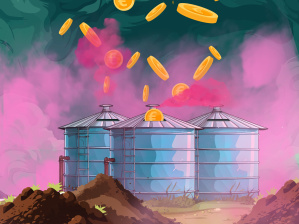High Steaks: How focusing on agriculture can ensure the EU meets its methane-reduction goals

Introduction
A new study shows that the EU could cut as much as 68% of its domestic methane emissions by 2030 if it implemented all the available mitigation measures across high-emitting sectors. The EU, as one of the instigators of the Global Methane Pledge, has committed to significantly reducing methane emissions by 2030. But a new study, undertaken by environmental consultancy CE Delft for the Changing Markets Foundation, concludes that it will be very difficult – if not impossible – to achieve this without introducing additional measures in the meat and dairy industries, which produce over half of domestic methane emissions. The study investigates the potential of methane reductions across different EU sectors. It found that the biggest methane reductions – up to 36% – could come from tackling emissions in the agriculture sector. This briefing summarises the main findings of the study and highlights key policy priorities that the EU should adopt now in the agriculture sector in order to realise significant methane reductions in line with its climate commitments.
PARTNERS






You might also like...

Blindspot: How lack of action on livestock methane undermines climate targets
The livestock agricultural sector is the single largest contributor to man-made methane emissions. Enteric fermentation in stomachs of ruminants, such as cows and goats, and manure management is responsible ...

Methane Matters: Towards a global methane agreement
At the 2021 Climate Change Conference, over 110 countries joined a pledge to reduce global methane emissions by 30% by 2030. This crucial commitment under the ‘Global Methane Pledge’ came at a time of scient...

Biogas Policies in the EU: Levelling up or locking in?
Commissioned by the Methane Matters Coalition, this report examines the current status of the biogas industry in the European Union, along with 7 country case studies.